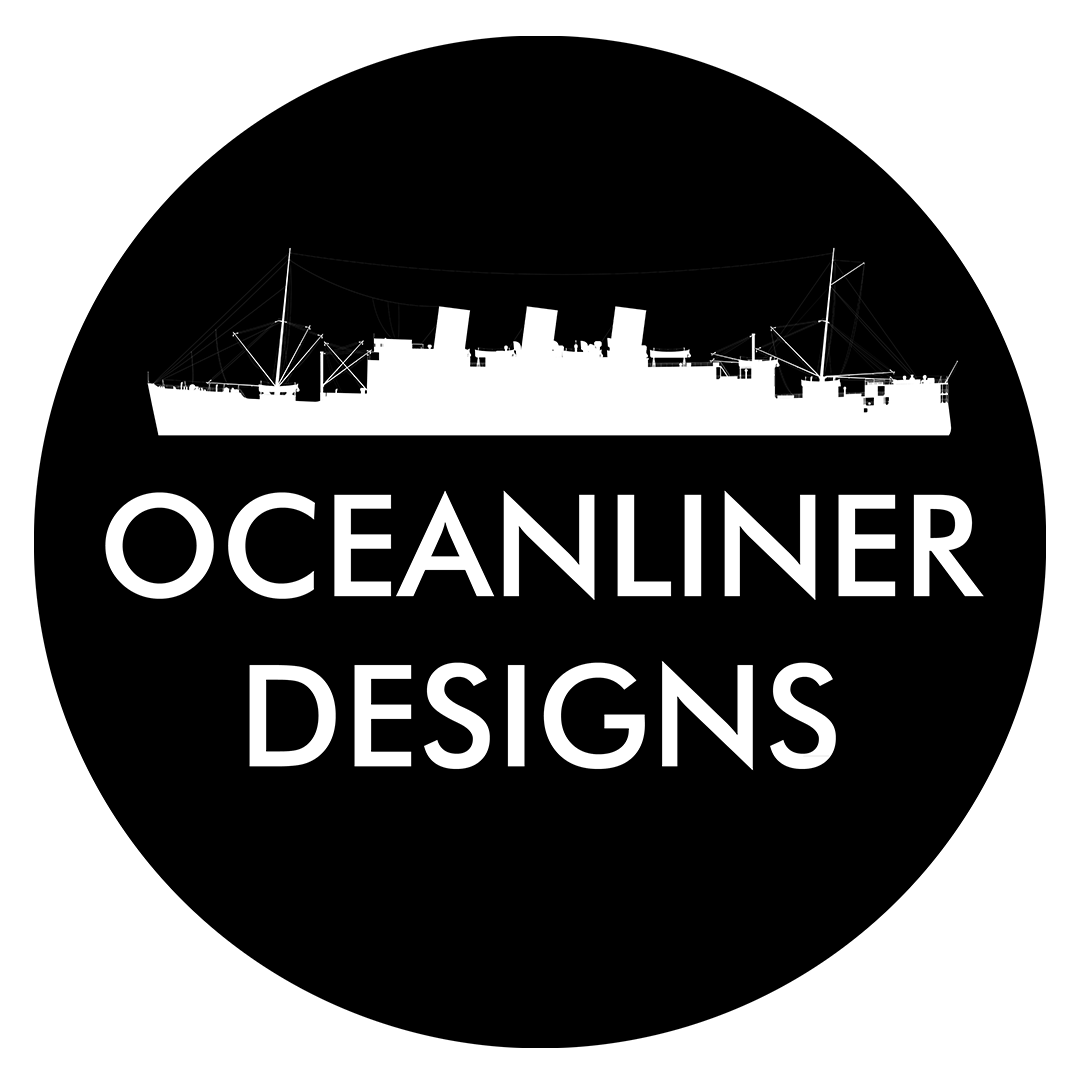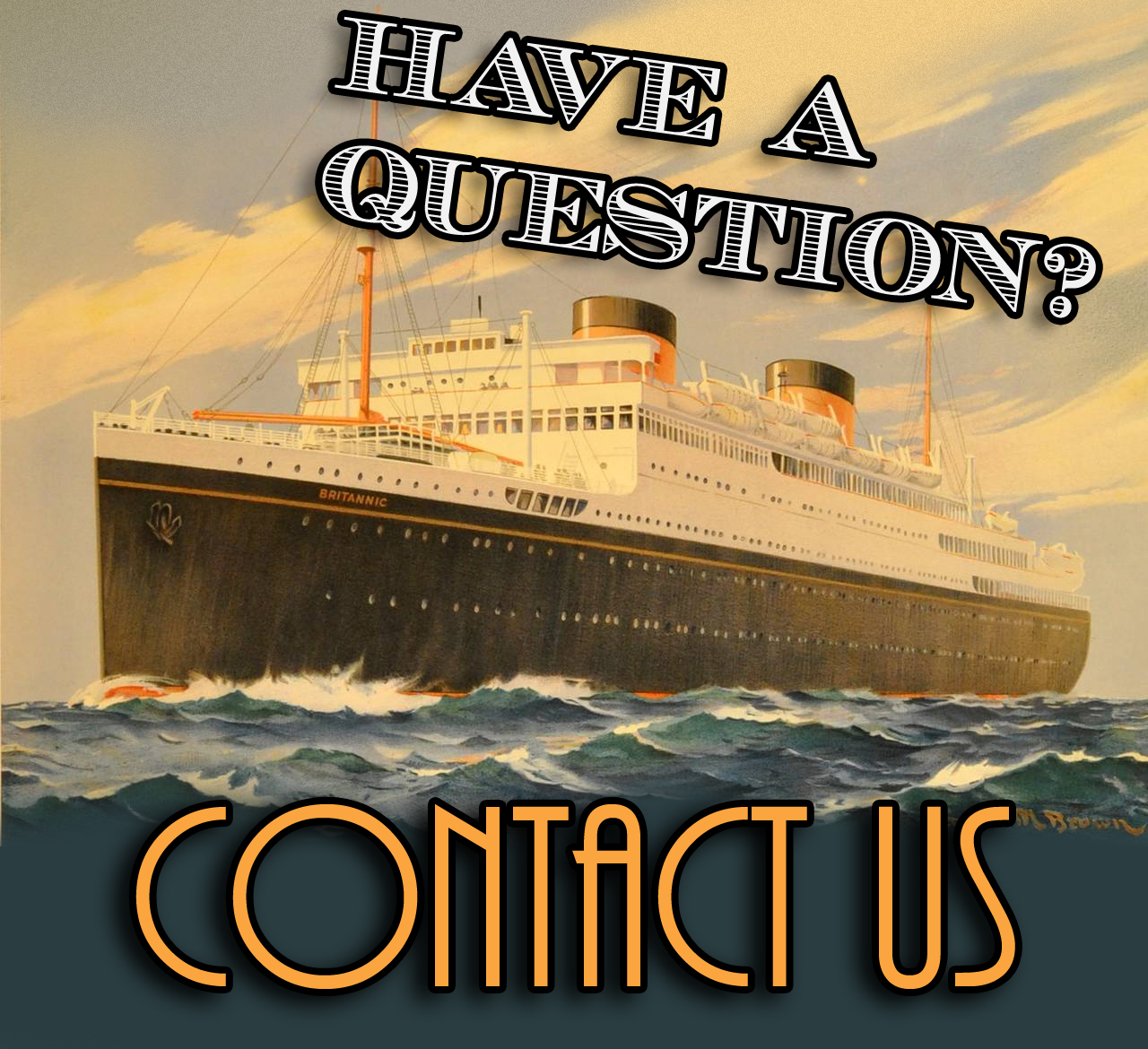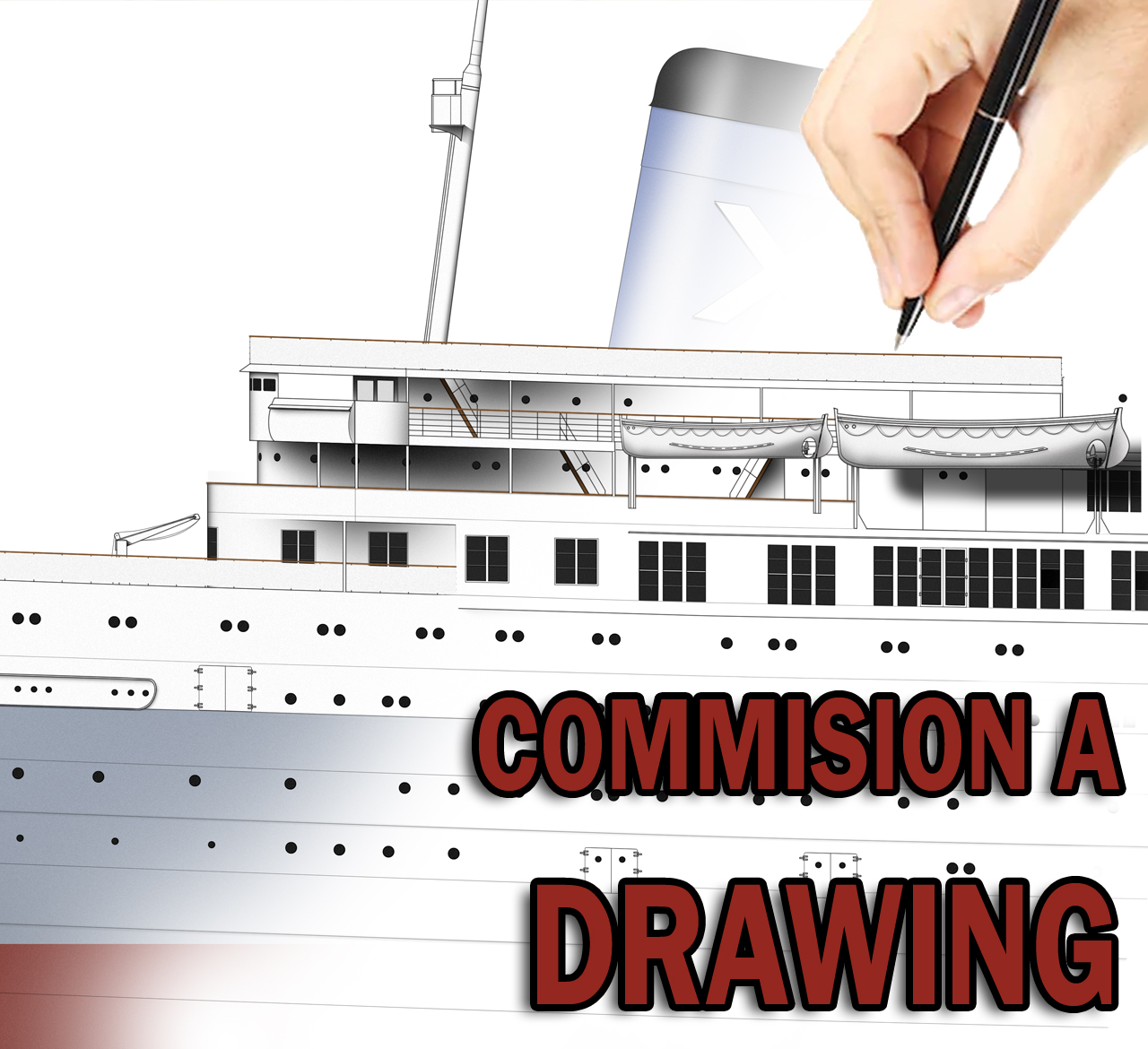cargo handling and storage on board P&O’s early liners
Michael Brady
P&O is a line whose name has, for the better part of a century, been synonymous with first-rate passenger service. The Peninsular and Oriental Steam Navigation Company operated an immense fleet of ships ferrying people from the ‘Old World’ to such far-flung corners of the earth like Australia or India. Behind the scenes though, P&O was far more than a simple passenger service; uncountable millions of tonnes of cargo were loaded on and unloaded from the holds of black-hulled, buff-funnelled ships of the Line. This article will briefly look at the impact this emphasis on cargo-handling had on the design of some of their ships - most evidently, the RMS Mooltan of 1923 and her sister Maloja.
P&O’s Mooltan in about 1952. Note the huge array of cargo cranes - some sixteen in total! Illustration by Liner Designs, available here.
When Mooltan was launched in 1923 she was one of the first in a series of new ships designed and built for P&O by Harland and Wolff of Belfast, Northern Ireland. The Line’s losses during the ‘Great War’ had been extensive - 85 vessels in total - and the Company was very much keen to re-build their fleet with the most modern technology available.
Before the war P&O had contracted a large number of their ships for construction by Caird & Company in Scotland but when the shipyard’s Head, Robert Caird, died in 1915 it was bought by Harland and Wolff - probably the world’s most famous shipyard having constructed and launched ‘Titanic’ and her sisters. In the post-War world, Harland and Wolff would go on to build a dazzling number of ships for a variety of lines; one of these was P&O.
Period photo of the Belfast Harland & Wolff works in the 1920s. The Company would build some 1,600 ships in its 150-odd years of operation. Image from Grace’s Guide: https://www.gracesguide.co.uk/Harland_and_Wolff
Mooltan was designed to operate over vast distances - far further than any of the massive transatlantic liners of the day. She and her running-mates were an important part of the link between the ‘Old World’ - Britain - and her colonies and external territories; namely India and Australia. (Indeed, Mooltan drew her name from ‘Multan’, a city in Punjab). Her extensive route would see her traverse the World’s largest oceans over the course of millions of kilometres. As such, it was necessary to kit ships like Mooltan with exceptional cargo-handling facilities.
Nearly two-thirds of Mooltan’s hull was dedicated to cargo-carrying what is now known as ‘Break Bulk Cargo’. Break Bulk refers to cargo which, instead of being initially packed into containers (as in modern shipping containers) or in bulk (like grain or oil), would be hoisted aboard a ship in barrels, casks or crates. Until the 1950s, when shipping containers became commercially viable, this was the only way to load a ship with assorted goods.
Break Bulk Cargo is relatively costly and time-consuming to assemble and prepare for loading aboard a ship. In the day, train wagons would shunt tonnes of cargo to warehouses where it would be sorted and piled on the quay prior to the arrival of a designated ship. Once the ship was moored, Stevedores - cargo-handling experts - would swarm like ants and swing pallets loaded with goods aboard the ship and down into the cavern-like cargo holds.
A diagram showing the huge amount of space dedicated to cargo on board Mooltan and her sister Maloja - about 2/3 of her hull volume. No fewer than seven cargo hatches (red), serviced by sixteen massive hydraulic cranes, provided access to an array of cargo holds (blue).
P&O’s ships were designed to speed up this process as much as possible since the least amount of time spent in port would prove the most profitable for the Company. As such, whenever Mooltan or her running-mates were secured to the docks and the Stevedores set out to do their work, there was a surprising number of points for loading cargo. Seven hatches, reaching some eight stories down into the ship, could be loaded full of all sorts of goods. The holds were divided into space for mail, general cargo, refrigerated goods and even precious metals - there was a secure Bullion Room installed!
All of this was made possible by the sixteen immense hydraulic cargo cranes which towered over the ship’s decks like ancient Sequoias. These proved to be Mooltan’s secret weapon in the rapid and efficient loading of cargo; while most ships made use of electric cranes and winches, these monsters were hydraulically-operated and therefore unbelievably powerful. Therefore, not only were there more cranes than usual on the ship but each crane was capable of loading far more cargo per load than any other type afloat at the time.
Period diagram showing the internal works of a Hydraulic Jigger of the type similar to those fitted aboard Mooltan. Learn more
A set of Hydraulic Cranes fitted aboard Mooltan.
This method of combining a passenger ship with the cargo-handling capability of a dedicated freight ship proved successful for P&O and a large number of their ships used this array of cranes well into the 1920s. It was in the early 30’s, when P&O shifted their focus to cruising with Vickers-Armstrong-built ships like Strathnaver and Stratheden, that the hydraulic crane so favoured by Harland and Wolff was removed from the Line’s new vessels in favour of electric winches.
A rough sketch showing procedure for loading cargo from the quay with Mooltan’s massive hydraulic cranes. While one picks cargo up from the side (upper left), the other swings about and loads cargo into the hatch (lower right). It is easy to see how this would speed up the cargo-loading process dramatically - imagine sixteen of these operating at once!
In time P&O would come to operate an extensive, modern fleet of dedicated cargo ships. This fleet would supplement the Line’s profits even as the demand for passenger fares declined rapidly with the introduction of jet travel. In the early 1950s, Mooltan and Maloja were finally withdrawn from service and sent to the Breaker’s Yard; the final vestige of a black-hulled class of ships so familiar to ports across the Indian and Pacific oceans.
SS Aden - one of the newer dedicated cargo ships which saw P&O through the 50s and 60s. Photo from: http://www.pandosnco.co.uk/ssaden.html











